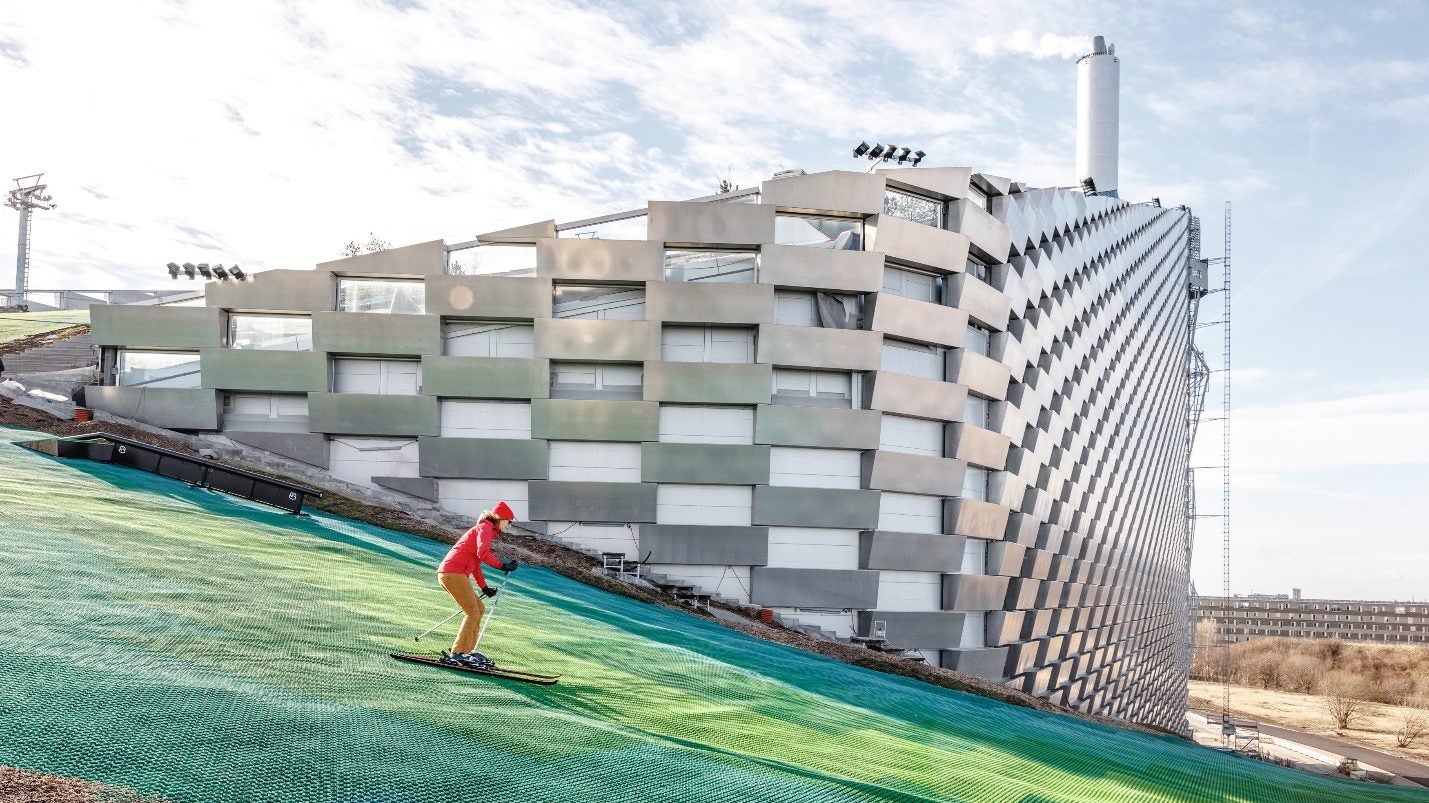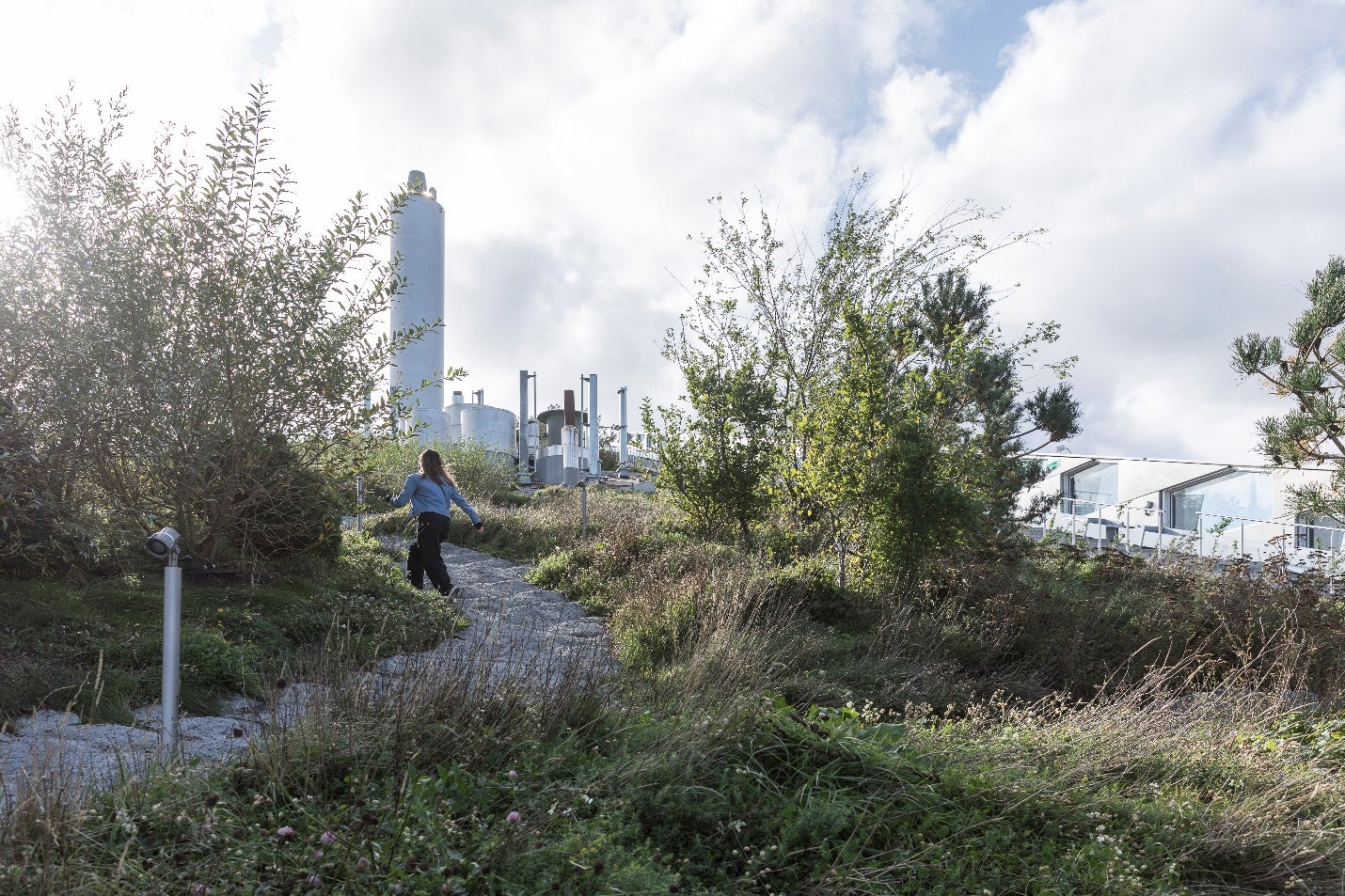CopenHill: The world’s most consequential artificial ski slope is officially open
It was four years ago that the world first heard of a revolutionary power plant, which burns waste instead of fossil fuel, and has a roof that doubles as a ski slope. Copenhagen’s Amager Resource Center was hailed as a landmark example of public architecture from the outset. With a chimney that would rhythmically puff out steam rings for every ton of carbon dioxide produced by the plant, its architects wanted to put the “fun factor” into a nondescript industrial building. This was, in part, to raise consciousness about energy consumption and its effect on the planet.


It was four years ago that the world first heard of a revolutionary power plant, which burns waste instead of fossil fuel, and has a roof that doubles as a ski slope. Copenhagen’s Amager Resource Center was hailed as a landmark example of public architecture from the outset. With a chimney that would rhythmically puff out steam rings for every ton of carbon dioxide produced by the plant, its architects wanted to put the “fun factor” into a nondescript industrial building. This was, in part, to raise consciousness about energy consumption and its effect on the planet.
That extraordinary concept is now a reality, as CopenHill ski slope opens to the public this weekend. Skiers and snowboarders can whiz down the 1,475 ft (450 m) slope, with dramatic views of Copenhagen’s skyline and Sweden in the distance. There are dedicated trails for runners and hikers, and the chance to climb to the structure’s 279 ft (85 m) summit. At the foot of CopenHill, a restaurant awaits skiers or those who want to skip the sporty possibilities of the visit altogether.

The roof of the $670 million waste-to-energy plant, which began operations in 2017, is leased to an independent operator who runs the recreational facilities. CopenHill charges 220 kroner ($33) for an hour on the slopes and mandatory insurance. The hiking and running trails are accessible to the public during opening hours at no cost.

Architect Bjarke Ingels, whose firm designed CopenHill, likes to describe the project in terms of erecting an alpine mountain to add interest to Denmark’s flat topography. “The ski slope idea came from realizing that Copenhagen has a cold climate with several months of snow, but absolutely no mountains,” Ingels told Architecture Digest last year. “Copenhageners have to travel several hours by car to reach the ski slopes in Sweden. The roof is not only going to function as a ski slope, but as a real mountain with a green forest area, a hiking trail, and climbing walls.” CopenHill is a marquee example of “hedonistic sustainability,” a term Ingels coined to describe stunning, sustainability-focused architecture that recasts the often gloomy and highly technical discussions around energy conservation and climate change. “Suddenly sustainability actually becomes the more fun, the more enjoyable alternative to what we know,” Ingels says.
He adds that the building also functions as a sign of Copenhagen’s commitment to clean energy. “CopenHill is a blatant architectural expression of something that would otherwise have remained invisible: that it is the cleanest waste-to-energy power plant in the world,” Ingels said at CopenHill’s opening ceremony today. ”As a power plant, CopenHill is so clean that we have been able to turn its building mass into the bedrock of the social life of the city.”
Ingel’s cousin, Christian, runs the recreation facilities at CopenHill (Amager Skibakke in Danish). Christian says that building a public playground atop a garbage incinerator with a hard-pressure steam chimney posed several construction challenges. “It has been a construction site for a long time,” he explained to the Danish outlet TV 2 Lorry, which had a trial run on the slopes last week. “We are really looking forward to opening and getting people on the ground.”